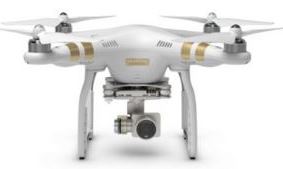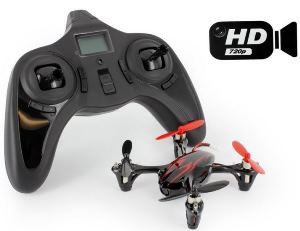When people think of Drones they just see the Quad, they do not see behind that device and so it seems very easy to build and operate, In truth it can be simple just buy a Phantom, use your existing tablet and away you go. It works, well most of the time! but where do you go from there? This is like building an Igloo from snow, you only have the snow and there is only so much you can build with snow. what you really need is bricks and timber and glass to build a house.
The intention here is to re-use or add to the basic system as you gain skill and knowledge without breaking the bank or getting to a point where you give up. Everything that is discussed will be part of that re-usable process with the exception of the Little Hubsan mini quad which will remain intact and unaltered, simply because its so much fun and it builds your skills almost at a moments notice.
The Main components needed are a suitable Frame (SK450) Suitable Radio (in my case Futaba 6-7 channel) Motors and batteries, Speed controllers and the all important Flight controller. This post will deal with this all important part.
The flight controller should be considered the heart and soul of the Drone. If you try to fly a Quad WITHOUT a controller its a bit like balancing a plate on a stick and having a hard boiled egg on the plate . For a while it can be done while everything is perfectly balanced but when it starts to get away from you things go very bad in a heartbeat.
The flight controller solves this problem by using gyroscopes and acceleration sensors to determine where the drone is moving to and how fast and then applying a corrective action to the speed controls to bring everything back into balance. This happens hundreds of times each second and should be unseen by the operator. The choice of controller is not a simple as it would appear!.
Basically you have 2 choices:
buy a closed source unit such as a DJI or Naza and you have almost instant success BUT only on the specific drone that the unit is programmed for. you cannot add more functions and GPS way-point flying is usually not available, you cannot add cameras or telemetry systems to help you in the future.
The second choice and my preferred solution is to use an “Open source” programmer and controller so YOU are in total control of what you do and how you assemble and tune your aircraft. It is true that this WILL take longer and you will need to learn more about the operating system but you do not need to be a programmer or a Geek. you just need some help. The solution is simple;-
I use an Opensource controller that is a Pixhawk manufactured in the USA by 3DR. This unit is totally programmable by the user for either aircraft, multi-copters, ground based rovers or even power and sailing boats. There is an online community of developers and enthusiasts from all over the world to answer questions and give advice to you. This device has a built in GPS module, barometers for height as well as all the sensors you need for flight, you can add a Telemetry radio to send information to and from the Drone such as battery condition, speed, height and GPS location. This information can easily be displayed on a tablet or laptop. More on this later.
It is this support from the community that makes this the best option. for example, one guy was flying his quad and noticed that the battery monitor system was being ignored by the controller when it should have been turning the quad around and sending it home before the battery went flat. he advised the community and one of the software developers checked and found the bug and put it right the SAME day. the guy was able to fly again as soon as he downloaded the new firmware. he was happy and the community was happy. another instance was when a member asked if it was possible to add an additional flight mode for camera mapping operations, the new mode was added with additional features within a week. These are now standard features in the system. This will NEVER happen with a closed source device.
It is this constant development that keeps your system at the fore front of this expanding technology and allows the system to grow with your knowledge and successes. I will soon add this to my parts listing for the Multicopter and the Fixed wing aircraft.


